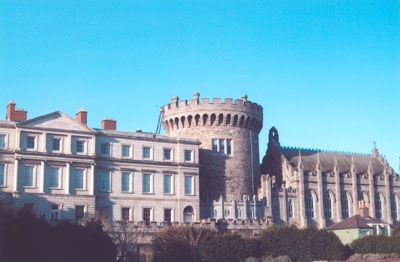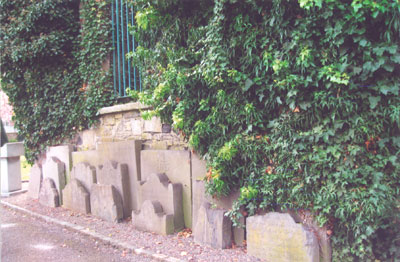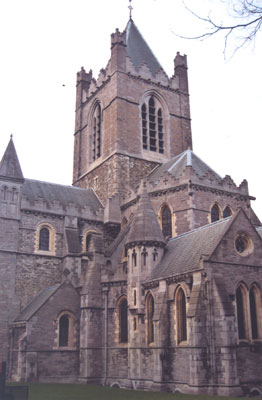A walk through Viking Dublin
This item appears on page 70 of the January 2010 issue.
by Julie Skurdenis
Most visitors to Dublin wouldn’t automatically link the city to the Vikings. And if they did, it would be the Vikings as marauders and destroyers rather than as anything good.
The Vikings, or Norsemen, first appeared in Ireland at the end of the eighth century AD. In Dublin, they first arrived in 837, reputedly aboard 60 long ships that sailed down the Liffey River. Repulsed, they returned four years later, this time as settlers, farmers, merchants and craftsmen, although some used Dublin as a base for raiding expeditions to other parts of Ireland.
Within 150 to 200 years of their first incursions, the Vikings had so merged with the local population that Dublin was considered a Hiberno-Norse town and the Vikings had adopted Christianity.
I decided — on my most recent trip to Dublin with my daughter, Katie, in March ’09 — to search for as much as I could find of Viking times in one busy day of exploration.
Armed with a detailed city map and comfortable walking shoes, there is no better place to begin one’s search than at a spot few know about. Even our cab driver who had been tooling around Dublin for over 35 years said he must have passed the spot thousands of times and not realized its significance.
Where the Vikings landed
That “spot” is a 13-foot-high granite slab called the Stein, standing on a bit of pavement where six of Dublin’s busiest streets intersect just north of Trinity College: D’Olier, Hawkins, Townsend, Fleet, Pearse and College.
The Stein may mark the place where the Vikings first landed, although there’s another spot within the grounds of Dublin Castle that also claims that honor. Most probably the Stein represents the stones the Vikings erected 1,000 years ago to mark the boundaries of their territories. The face carved on one of the sides is of Ivar, a ninth-century Viking king.
From there it’s a 15-minute walk along busy College Street, College Green and Dame Street to Dublin Castle on Castle Street. This site’s history goes back to pre-Viking days when a Celtic fort stood there. The Vikings who arrived in 837 probably landed close to this fort in what is now the castle’s garden. Back then the garden was the dubh linn, or “black pool,” the point where two rivers, the Liffey and the now-subterranean Poddle, met.
In 841, the Vikings settled just west of this Celtic fort. The dominant round tower that distinguishes Dublin Castle dates from much later, built by Anglo-Norman invaders in 1204 almost 400 years after the first Viking invasions of Dublin.
Backtrack a few steps along Castle Street to Dublin’s City Hall on Dame Street. The atrium of this Georgian-style building is spectacular, but it’s the exhibit in the vaults below that will interest Viking-ophiles. Called “The Story of the Capital,” it chronicles a thousand years of Dublin’s past, including the Vikings.
Old fish market
A five-minute stroll from City Hall along Lord Edward Street leads to Fishamble Street. This is not only the oldest street in Dublin, dating from the 10th century and once the site of the fish market, but where a building once stood in which Handel’s “Messiah” was first performed in 1742.
Fishamble leads to the River Liffey and Wood Quay, the site that generated a heated controversy in the 1970s and ’80s. Construction of the new Dublin City Council offices uncovered remnants of the Viking city deemed one of the most important Viking sites in Europe. There was much opposition to continued construction, but eventually the City Council won.
Their building was erected, although, fortunately, the ancient walls were preserved in the basement and the Viking relics found on site were sent to the National Museum. A stylized Viking ship sculpture commemorates the original Viking town that lies just beneath Wood Quay.
Just past the City Council building a left turn on Winetavern Street leads to a mosaic of a typical Viking building. It’s not a miniature but a full-size plan, giving an idea of how small a Viking house of about AD 1000 actually was, especially considering that farm animals often shared living quarters with their owners.
Sitric’s Church
Just around the corner is the entrance to Christ Church Cathedral, originally built of wood in 1038 by the Hiberno-Norse king Sitric Silkenbeard. Nothing remains of that structure.
The oldest part of the present-day church that remains is the 11th- to 12th-century enormous stone crypt, one of the oldest structures in Dublin. The present-day church was extensively renovated during the late Victorian period, the late 19th century.
After you’ve meandered through the cavernous crypt, don’t miss in the cathedral’s nave the stone tomb of Richard de Clare, called “Strongbow.” He was an Anglo-Norman knight who arrived in Dublin in 1170 and conquered it in the name of King Henry II of England. This marked the end of the Viking era in Dublin. Another “do not miss” in the nave are the medieval floor tiles.
In the Synod Hall adjacent to the church is an exhibit called Dublinia that transports visitors back — via videos and live demonstrations — to Viking days.
No visit to Dublin would be complete without seeing some of the many Viking artifacts. The best place to do this is the National Museum of Archaeology & History, back across town on Kildare Street, about a 20-minute walk from the Cathedral. Some of what was recovered from the Wood Quay excavations is on display there too.
While there, take a look at the fabulous Irish Bronze Age gold collection (2200-600 BC) and at the mummified “bog bodies.”
Tea at the Merrion
For a special treat — nothing to do with Vikings but everything to do with elegance, gracious service and quality — reserve an afternoon tea at the Merrion Hotel (Upper Merrion St., Dublin 2, Ireland; phone 353 1 603 0600, fax 603 0700, www.merrionhotel.com), just off famous Merrion Square.
The Merrion, consisting of four Georgian townhouses arranged around 18th-century gardens, is considered one of Dublin’s finest hotels, if not the finest.
If you don’t plan to stay there (rates begin at €475, or $714), consider afternoon tea served in one of the stately drawing rooms, perhaps in front of a fireplace. It will make you feel like lord or lady of the manor for an hour or so.
Tea consists of scones, clotted cream, finger sandwiches, pastries and tea — and perhaps a glass of champagne. You won’t want dinner later on. (The Merrion even made up a “doggie bag” for us with leftover goodies that we indulged in over the next few days.) Afternoon tea costs €36 ($54) per person or, with champagne, €49 ($74).
If you go…
We flew Aer Lingus (800/474-7424, www.aerlingus.com), as we have on every trip to Ireland.
Through Your Home From Home (phone, in Ireland, 353 1 678 1100, fax 678 1169, www.yourhomefromhome.com), we rented an apartment close to St. Stephen’s Green. It cost €127 (near $190) per night — a bargain, we felt, for two bedrooms, two bathrooms and a huge terrace.



